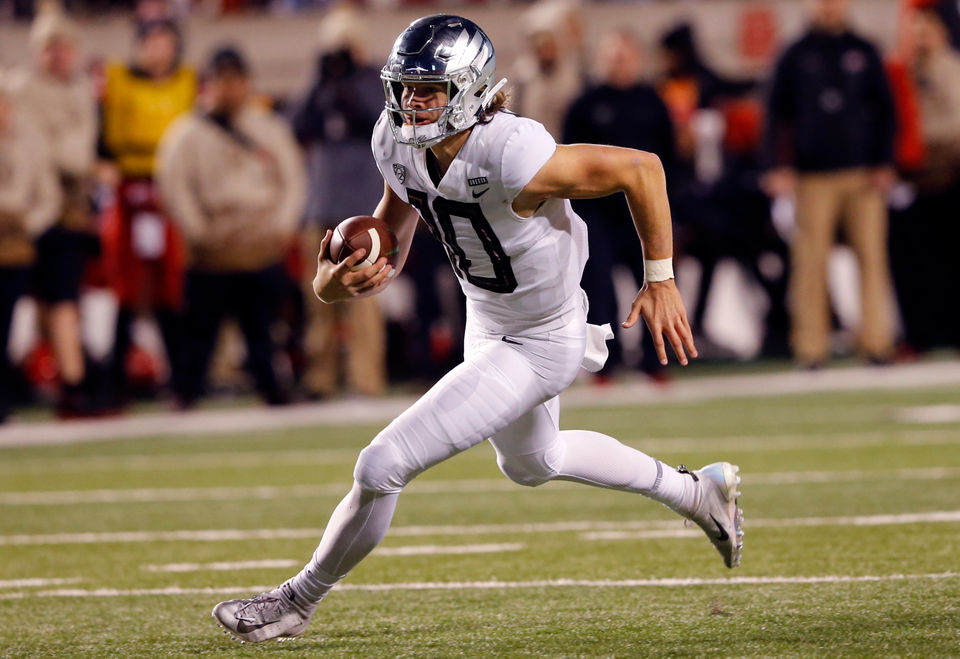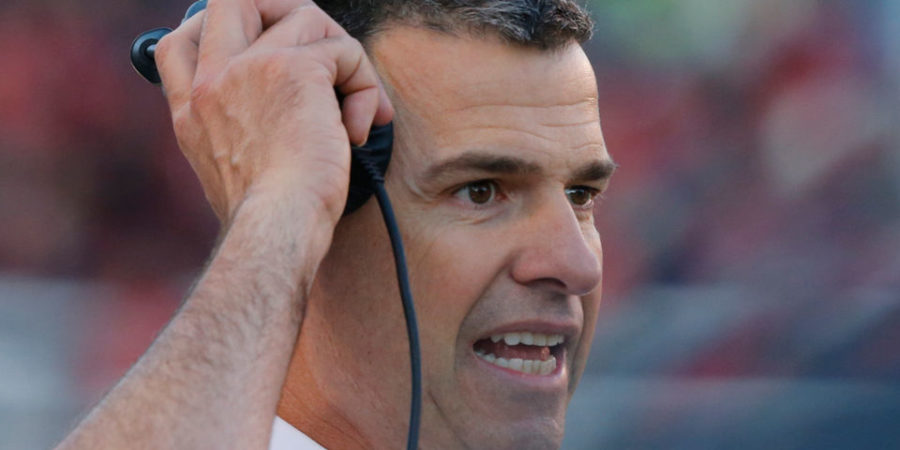To paraphrase an old adage, “Sometimes you’ve got to get worse before you get better.”
Plenty of first-year head coaches across the country are experiencing that first hand this season. For proof, look no further than the three first-year head coaches with former ties to Oregon. UCLA’s Chip Kelly (2-8 overall), Nebraska’s Scott Frost (3-7), and Florida State’s Willie Taggart (4-6) have each endured their fair share of struggles as they work to rebuild the football programs at their respective institutions. However, aside from perhaps the circumstances surrounding Taggart and Florida State, few expected these coaches to step in and win big right away in Year 1.
While the current situation in Eugene is not nearly as dire as the ones in Los Angeles, Lincoln, and Tallahassee, Mario Cristobal has similarly found life as the new head football coach on campus to be filled with challenges.
Cristobal stated in his weekly Monday press conference that the rebuilding effort at Oregon wasn’t a “turn-key” operation, suggesting that success wasn’t going to come overnight given the issues stemming back to the end of the Helfrich era and the immediate fallout (particularly on the recruiting front) that resulted from Taggart’s hasty departure last December.
Certainly, few realistically expected the Ducks to compete for a Pac-12 title in Cristobal’s first year calling the shots, but there’s no doubt that Oregon entered the season with certain distinct advantages over other teams in the conference.

For one, the Ducks entered the season boasting an exceptionally deep and experienced offensive line that unbelievably has no seniors. Though they have shown flashes of the physical style of play that Cristobal aims to employ, it’s been a unit in flux since true freshman sensation Penei Sewell went down with an ankle injury suffered a month ago versus Washington. Still, considering the group’s collective experience and Cristobal’s celebrated pedigree as an offensive line coach, the loss of Sewell was expected to be something this unit could reasonably overcome. Instead, Oregon’s offensive line has largely underwhelmed since Sewell’s injury, paving the way for a rushing attack thats averaging just 114.75 yards per game over their last four.
Additionally, the Ducks returned 11 players on defense who started at least one game a season ago for a unit that was among the most improved in the entire country. In 2016, the Ducks ranked 126th in both total defense (518.4 yards per game) and scoring defense (41.4 points per game). Last season, in Jim Leavitt’s first season as Oregon’s defensive coordinator, the Ducks improved to 46th in total defense (369.2 yards per game) and 81st in scoring defense (29 points per game). This season, however, the Ducks have taken a noticeable step back in their development as a defensive group, ranking 67th in total defense (402.6) and 73rd in scoring defense (28.0). Their struggles defending the run have been particularly eyebrow-raising. Despite retuning a collection of all-conference defenders along the front seven in Jalen Jelks, Troy Dye, Justin Hollins, and Jordon Scott, Oregon has dropped from 25th nationally in run defense (128.54) to 54th (152.10), as the last six games have seen the Ducks surrender 203.17 yards per game to opponents.
Of course, the Ducks also returned arguably the nation’s best quarterback in Justin Herbert, whose exploits have been well documented and whose play likely would have generated even more buzz coming into the current season if not for a broken collarbone that sidelined him for five games in 2017.
All this isn’t to say that Oregon wasn’t without their share of glaring weaknesses, as the overall talent level at running back and wide receivers is as bad as it’s been in decades (truly), while the defensive backfield is arguably the thinnest of any on the entire roster. In fact, the team depth in general remains just as much of an issue as it was during the offseason. The concern, however, stems from the fact there has been an obvious lack of development at just about every position. This, coupled with a stubborn philosophical approach that has failed to adapt and play to the strengths of the talent already on the roster, is what has Duck fans rightfully uneasy and unsure of what the future holds.
Add it all up, and Cristobal is correct in saying that the rebuild required at Oregon isn’t something that can be achieved overnight, but don’t be fooled into thinking this was reclamation project that necessitated a complete start from scratch either.
With only two regular season games left to go, we’ll find out in short order whether the Ducks are ultimately on schedule as they work to regain their former position among the nation’s elite. However, there’s no questioning that when it comes to assessing the actual progress thats been made, forming an objective opinion has become precariously more cloudy than it was just a month ago.


“the overall talent level at running back and wide receivers is as bad as it’s been in decades (truly)”
This is the truth and the number one issue. No matter how talented a (non-running) QB is, he cannot be better than those he hands or passes the ball to. It would be like having a star non-shooting PG in basketball leading your team with only one player on the team who can hit shots. How many games would you expect that team to win?…. Of course, not many. Any fan being upset that a team constructed as such was not an explosive scoring machine would truly be wearing colored glasses in the tint of that fan’s chosen team.
As you stated, you have to go back to the 1990’s to find the last time Oregon was without a true number 1 RB, and many years the Ducks had two of them. As presently playing, there are zero on the roster now. And I have my doubts that the two verbally committed recruits are either.
At wide receiver, there is a chance for change in the coming recruiting class – four 4 stars committed and a chance still with 5* Ford. Imagine how dangerous Oregon’s offense would be with 3 ‘Dillon Mitchells’ on the field.
As far as Arroyo is concerned, his past record as a play caller speaks for itself. And it is not good.
Good stuff, Doneal.
I’m going to be curious to see how guys like Verdell and Dye develop within this offensive system. Both players have had some moments of brilliance this season, but neither seems to be an ideal fit for the ground game this staff is trying to employ. Running more action that works to get these guys to the perimeter seems to be a logical move, but has seldom been part of the game plan this season.
The approach seems especially hard-headed, which should rightfully give Duck fans concerns moving forward….especially, as you mentioned, when you consider some of the backs Oregon is looking to bring in with the next recruiting cycle. Wilson feels like a good enough fit, but Dollars is definitely more of a change of pace, multi-purpose weapon that this staff seems to be adverse to utilizing. Going to be curious to see how his career in Eugene plays out.